40 Flavorful Offal Soups Every Adventurous Eater Should Try
Offal soups represent a culinary adventure that challenges traditional dining expectations and transforms overlooked ingredients into remarkable gastronomic experiences.
These extraordinary dishes emerge from resourceful cooking traditions across global cultures.
Skilled chefs transform seemingly undesirable animal parts into rich, complex flavor profiles that surprise and delight adventurous eaters.
Nutritional powerhouses packed with minerals and proteins, offal soups offer more than mere sustenance.
The intricate preparation methods require precision, creativity, and deep understanding of ingredient interactions.
Professional and home cooks alike appreciate the profound cultural significance embedded in these time-honored recipes.
Regional techniques and secret family methods elevate these soups from simple meals to extraordinary culinary statements.
Here are 40 unique offal soups that will expand your palate and challenge your culinary boundaries:
Unique Offal Soups with Unexpected Flavor
Offal soups are bold, nourishing, and deeply rooted in tradition. Discover comforting bowls where every bite brings warmth, robust taste, and a surprising culinary adventure.
Kaleh Pacheh
Kaleh pacheh captures Iranian breakfast culture through its intense, gelatinous broth crafted from slow-cooked sheep head and feet.
Middle Eastern culinary traditions celebrate this nutrient-dense delicacy that transforms humble animal parts into a rich morning meal.
Skilled Persian cooks carefully prepare the dish by simmering sheep components with aromatic spices like turmeric and garlic.
Onions enhance the broth's deep flavor profile, creating a savory experience that resonates with regional palates.
Tender meat and collagen-rich tissues provide substantial nutrition and a unique textural experience.
Each serving represents generations of resourceful cooking techniques passed through family kitchens.
Sheep head and feet become a warming, protein-packed breakfast that connects diners to traditional culinary practices.
Batchoy
Batchoy erupts with bold Filipino flavors, blending pork offal, round egg noodles, and rich broth into a street-level comfort classic from Iloilo's La Paz district.
Shrimp paste and occasional soy sauce amplify its intense umami profile, creating a complex taste sensation.
Crispy pork cracklings and fried garlic crown the steaming bowl, adding textural contrast and depth.
Traditionally prepared with chicken or beef stock, this soup represents generations of regional culinary tradition.
Multiple origin stories circulate about its creation, though Iloilo remains its undisputed birthplace.
Locals consume batchoy as a hearty meal, often enjoying it at street-side eateries and market stalls.
Raw egg sometimes crowns the dish, further enriching its robust character.
Kelle Paca Corbas
Kelle paca corbas emerges as a bold Turkish soup that transforms animal head and offal into a nutrient-dense comfort dish prized for its rich, hearty flavor profile.
Mountain shepherds traditionally prepare this protein-packed meal using sheep or goat heads slowly simmered with onions and salt until meat effortlessly separates from bones.
Adventurous diners appreciate the soup's complex texture created by incorporating lamb neck, tongue, and brain into the broth.
Resourceful cooks enhance the soup's depth by whisking a roux of butter and flour, then adding beaten egg, garlic, and a splash of bright lemon juice.
Crusty bread serves as the perfect companion to soak up the intense, warming liquid.
Greens provide a fresh counterpoint to the meat's intense flavor.
Nutritional benefits make this soup a staple for cold winter days when warmth and sustenance matter most.
Ciorba De Burta
Ciorba de burta stands out as Romania's most iconic tripe soup, featuring tender beef stomach strips swimming in a tangy, creamy broth that challenges adventurous eaters.
Romanian kitchens transform cow stomach lining into a surprisingly delicious yellow-tinted soup packed with complex flavors.
Vinegar and sour cream provide sharp, rich undertones that balance the meat's distinctive texture.
Garlic-based mujdei sauce adds intense spiciness to each spoonful.
Chefs carefully simmer the broth with aromatic vegetables like onions, carrots, and parsley roots.
Peppercorns, bay leaves, and lovage contribute deep, warming notes to the soup's profile.
Sliced red peppers create visual contrast against the soup's creamy background.
Seolleongtang
Seolleongtang stands as a soul-warming South Korean bone broth that transforms humble cow parts into a milky white elixir through meticulous slow-cooking.
Korean families cherish this winter comfort soup, simmering bones, feet, head, organs, brisket, and shank for hours until achieving its signature creamy texture.
Royal origins trace back to King Seonjong's massive feast during an agricultural worship ritual, where a sacrificial cow became the soup's inspiration.
Historical records suggest the name derives from Seonnongtang, referencing the specific cooking location at Seonnongdan.
Generations have passed down this nutritious recipe, connecting modern diners to ancient culinary traditions.
Restaurants across South Korea serve the soup as a staple, often accompanied by kimchi and rice.
Diners customize their bowl with green onions, salt, and black pepper to enhance the rich, collagen-packed broth.
Majgaluska Leves
Majgaluska leves unleashes Hungarian comfort through its silky chicken liver dumplings swimming in a rich vegetable broth packed with complex flavors.
Hungarian kitchens traditionally prepare this warming soup by blending ground chicken liver with eggs, breadcrumbs, onions, and paprika into tender dumpling balls.
Carrots, celery, kohlrabi, and turnips provide a robust vegetable foundation for the broth's depth.
Skilled home cooks carefully shape the liver mixture into small spheres before gently dropping them into simmering liquid.
Vegetable oil helps bind the liver mixture and creates a smooth texture.
Cow Heel Soup
Cow heel soup stands out as a beloved Caribbean comfort dish originating from Trinidad, featuring tender cow heel slow-cooked into a rich, flavorful broth packed with nutritious ingredients.
Caribbean families cherish this traditional recipe with deep cultural roots and personal twists across different households.
Savory split peas, okra, and carrots blend seamlessly with the gelatinous cow heel, creating a hearty base bursting with complex flavors.
Onions provide additional depth and aromatics to the soup's profile.
Dumplings occasionally enhance the meal, though some prefer the soup without them.
Generous seasoning with salt and pepper elevates the overall taste experience.
Locals prepare this warming soup with pride, often serving it hot in large bowls.
Magiritsa
Magiritsa emerges as a traditional Greek Easter soup celebrating lamb's entire culinary potential by transforming less desirable meat cuts into a rich, soul-warming delicacy.
Greek families prepare this hearty soup after religious fasting, using lamb offal, tender meat scraps, and fresh vegetables as foundational ingredients.
Dill, scallions, and aromatic spices infuse deep flavor into the savory broth, creating a complex taste profile.
Egg and lemon sauce (avgolemono) transforms the soup's texture, adding a creamy consistency that binds ingredients beautifully.
Fresh herbs provide brightness and balance to the intense meat flavors.
Religious significance marks this dish as a pivotal moment during Easter celebrations.
Historically, resourceful Greeks ensured no lamb part went to waste through this ingenious recipe.
Generations have passed down this meaningful soup, connecting cultural traditions through one remarkable dish.
Soto Babat
Soto babat emerges as a legendary Indonesian soup bursting with complex flavors from carefully prepared beef tripe and aromatic spices.
Indonesian kitchens transform this humble ingredient into a rich broth that sings with ginger, turmeric, and lemongrass.
Fragrant herbs like kaffir lime and bay leaves infuse the soup with deep, multilayered taste sensations.
Beef tripe gets tenderly boiled and cut into bite-sized pieces before simmering in the intensely seasoned liquid.
Coriander and white pepper add subtle warmth and depth to each spoonful.
Bean sprouts, sliced cabbage, and glass noodles provide crisp textural contrast to the soft meat.
Fried shallots sprinkled on top offer a delightful crunch and extra dimension.
Served alongside steamed rice and optional chili sauce, this soup represents a quintessential comfort dish in Indonesian cuisine.
Sopa De Mondongo
Sopa de mondongo transforms tough beef or pork stomach into a comforting Latin American soup bursting with regional flavors and nutritious ingredients.
Adventurous eaters embrace this hearty dish found across Central and South America, where each country adds its unique twist.
Tripe gets carefully chopped and simmered with vibrant vegetables like potatoes, cassava, corn, and plantains.
Chopped cilantro and sliced avocado provide fresh garnish and additional depth to the rich broth.
Onions and cabbage contribute extra layers of texture and taste to this rustic meal.
Spices vary by region, reflecting local culinary traditions and ingredient availability.
Generations have passed down recipes, making sopa de mondongo more than just a meal - it's a cultural connection.
Stomach meat becomes tender and delicious through slow cooking, challenging its initial tough reputation.
Leberknodelsuppe
Leberknodelsuppe delivers a bold Austrian comfort classic where tender liver dumplings swim in a rich, warming broth packed with deep, savory flavors.
Generations of Austrian families have treasured this hearty soup as a winter staple and nourishing meal.
Beef or pork liver forms the dumpling's core, blended seamlessly with stale bread, minced onions, and fragrant herbs.
Precise seasoning transforms basic ingredients into a culinary masterpiece that warms from within.
Germans and Austrians often serve this soup as a starter or light main course during cold months.
Traditional recipes pass through family lines, with each household maintaining slight variations.
Handcrafted dumplings require skill to achieve the perfect texture and taste.
Regional ingredients and personal techniques make each bowl a unique expression of Austrian cuisine.
Pig’S Organ Soup (Zhu Za Tang)
Pigs organ soup delivers a bold culinary adventure through adventurous protein selections from Chaozhou province, now celebrated across Singapore's street food scenes.
Singaporean diners relish this unique dish packed with diverse pig offal cuts like intestines, liver, and stomach.
Tender sliced pork mingles with crisp vegetable strips, creating complex flavor profiles that challenge Western palates.
Onion leaves and ground pepper enhance the meat's rich umami characteristics.
Braised tofu and fragrant rice complement the soup's intense meat-based foundation.
Eggs frequently join the mix, adding protein depth to the hearty broth.
Diners often drizzle a signature sauce blending soy sauce and chopped chili peppers for extra zest.
Shkembe Chorba
Shkembe chorba blazes through Bulgarian cuisine as a hearty hangover remedy crafted from tender cow stomach simmered in a spicy, tangy broth.
Bulgarians adore this traditional soup for its intense flavor and warming properties during cold winters.
Tripe transforms into a creamy, rich base through careful preparation with water, flour, and milk.
Garlic and paprika add robust depth to the soup's complex profile.
Red wine vinegar introduces a sharp, acidic punch that balances the meat's richness.
Hot chili peppers provide an extra kick of heat that awakens the palate.
Locals typically enjoy it alongside cold beer or rakia, a strong fruit brandy.
Chopped parsley sprinkled on top adds a fresh, green contrast to the deep brown soup.
Skembe Corba
Skembe corba blazes through Bulgarian cuisine as a robust tripe soup that warms souls with its intense, hearty flavors and complex preparation.
Slow-cooked pork or beef tripe forms the foundational protein, simmered for hours until perfectly tender and transformed into thin, delicate strips.
Aromatic onions, garlic, and bacon infuse deep layers of richness into the broth, complemented by a vibrant tomato sauce base.
Carefully selected seasonings like red and black pepper, parsley, and bay leaves enhance the soup's profound taste profile.
Traditional serving methods include accompanying the soup with tangy vinegar, creamy sour cream, and fresh warm bread.
Bulgarian families have cherished this dish for generations as a comforting winter meal.
Regional passion for skembe corba continues to preserve this beloved national recipe through generations of home cooks.
Menudo
Menudo bursts with robust flavors from beef tripe simmered in a spicy broth packed with chili peppers, garlic, onion, lime, and oregano.
Mexican culinary traditions trace this hearty soup to northern farmers who transformed cow offal into a celebrated dish.
Historical records show menudo emerged in the 1930s during festive celebrations like Christmas and New Year's Eve.
Two primary versions exist: menudo rojo and menudo blanco, each offering unique regional variations.
Families gather around steaming bowls, savoring the rich, complex taste that promises to cure hangovers and warm the soul.
Mexico claims ownership, though debates continue about its exact geographical origin.
Generations have passed down recipes, maintaining the soup's cultural significance.
Papaitan
Papaitan blazes through Filipino cuisine as a bold, bitter soup packed with goat or cow innards that challenge adventurous palates with its intense flavor profile.
Bile extracted from animal livers creates the signature tangy yellow base that transforms ordinary offal into a complex culinary experience.
Garlic, onions, and regional spices simmer alongside heart, tripe, and liver to build depth and complexity.
Gutsy diners appreciate this traditional northern Philippine dish for its unapologetic richness and robust taste.
Bitter notes dominate the broth, offering a unique sensory journey through indigenous cooking techniques.
Intense aromatics balance the metallic undertones of organ meats, creating a memorable meal.
Generations of Filipino families have celebrated this hearty soup as a testament to resourceful cooking that wastes nothing.
Iskembe Corbas
Iskembe corbasi, a potent Turkish tripe soup, rescues revelers from brutal hangovers with its intense healing properties.
Originating in Turkey, this comforting broth transforms humble tripe into a rich, creamy delicacy through careful preparation.
Skilled cooks slowly simmer tender tripe with water, milk, and a carefully whisked mixture of flour, butter, and egg yolks.
Garlic, red pepper, and vinegar add sharp, tangy notes that cut through the soup's dense texture.
Salt enhances the deep, complex flavors that make this dish a beloved morning remedy.
Generations have trusted iskembe corbasi to restore energy and soothe upset stomachs after long nights.
Warm and nourishing, this soup embodies Turkish culinary wisdom and comfort.
Czech Tripe Soup (Drstkova Polevka)
Drstkova stands out as a robust Czech soup brimming with tender beef tripe simmered in sweet paprika and caramelized onions.
Originating from Czech Republic's culinary traditions, this soul-warming dish delivers complex flavors through its distinctive preparation.
Onions and paprika create a light red broth that transforms humble tripe into a comforting meal.
Skilled cooks carefully balance spices to achieve a slightly piquant taste that warms you from within.
Czech families often serve drstkova during cold winter months as a nourishing and satisfying dish.
Restaurants throughout Central Europe feature this soup as a classic comfort food.
Beef tripe provides a rich, hearty base that makes drstkova a memorable gastronomic experience.
Flaki Po Warszawsku
Warsaw's legendary tripe soup transforms humble beef stomach into a spicy, hearty delicacy that captures Polish comfort food's essence.
Thin tripe strips simmer in a rich, aromatic broth bursting with marjoram, ginger, and nutmeg.
Beef tallow meatballs float alongside the tender strips, adding robust flavor and texture.
Sliced rye bread serves as the perfect accompaniment to soak up the complex spices.
Generations of Polish families have savored this traditional recipe passed down through decades.
Warm, peppery notes from allspice and paprika create a deeply satisfying meal.
Ginger and bay leaves contribute additional depth to the soup's intense profile.
Parsley garnishes the dish, providing a fresh finishing touch to this rustic Warsaw classic.
Flaki
Flaki plunges Polish cuisine into a robust world of savory adventure, featuring tender beef tripe strips simmered in a rich, spicy broth that warms stomachs during wedding celebrations.
Medieval Polish nobles first popularized this hearty soup as a prestigious dish signaling wealth and culinary skill.
Generations of families have passed down recipes combining beef stomach pieces with aromatic herbs and vegetables.
Carefully seasoned with marjoram, pepper, and garlic, the soup creates a complex flavor profile that surprises first-time tasters.
Intense meat stocks form the soup's powerful base, ensuring deep umami characteristics.
Bread rolls traditionally accompany this classic Polish comfort food, providing perfect dipping opportunities.
Nutritious and filling, flaki represents a proud slice of Polish gastronomic heritage.
Patsas
Patsas, a robust Greek soup, conquers hangovers with its intense flavor and hearty animal offal like tripe, beef, lamb, or pork head and feet.
Muscular Greeks devour this traditional late-night remedy after wild tavern adventures.
Authentic recipes blend rich broth with aromatic garlic, sharp onions, tangy lemon juice, and vinegar.
Skilled cooks sometimes enhance the liquid with avgolemono, a silky mixture of whisked eggs and citrus.
Each steaming bowl promises comfort and quick recovery from excessive drinking.
Adventurous eaters relish this protein-packed, warming dish that challenges conventional western palate preferences.
Mediterranean culinary traditions celebrate this unconventional soup as a potent and satisfying meal.
Sopa De Pata
Salvadoran sopa de pata transforms humble cow parts into a hearty, comfort-packed soup bursting with traditional flavors that warm the soul.
Tripe and cow feet form the protein-rich base of this rustic dish, simmered slowly with sweet corn, green beans, chayotes, cassava, and ripe bananas.
Indigenous and Spanish culinary influences merge in its complex seasoning profile, featuring aromatic onions, garlic, cumin, and vibrant achiote.
Salvadorans cherish this soup as a weekend family meal that connects generations through its deep, rich broth.
Protein-packed and nutrient-dense, this soup provides substantial nourishment during cool weather.
Khash
Khashi emerges as a hearty Georgian soup crafted from beef offal that transforms discarded animal parts into a nutritious survival meal historically born from peasant resourcefulness.
Generations of Georgians have embraced this robust broth simmered with beef intestines, tripe, shank, and organ meats like kidneys.
Resourceful cooks blend these ingredients with simple vegetables such as carrots, onions, and bell peppers to create a rich, warming dish.
Milk or milk-soaked bread often gets added to enhance the soup's creamy texture and depth.
Folklore suggests khashi originated when poor communities utilized unwanted animal parts after wealthy landowners claimed prime meat cuts.
Georgian families particularly prize this soup as a powerful hangover remedy and winter comfort food.
Modern restaurants continue serving khashi as a testament to cultural culinary resilience and ingenious cooking traditions.
Duck Blood And Vermicelli Soup (Ya Xie Fen Si Tang)
Nanjing's signature duck blood and vermicelli soup transforms humble ingredients into a culinary marvel that boldly challenges Western palates.
Savory dried tofu, shrimp, and aromatic caraway seeds enhance the soup's complex flavor profile.
Duck liver and intestines contribute rich, deep undertones to the broth.
Street vendors across China celebrate this iconic dish that originated from a resourceful poor man's accidental creation.
Nanjing's reputation as China's duck capital shines through this unique recipe.
Legend suggests a serendipitous moment when vermicelli accidentally fell into duck blood, creating an unexpected delicacy.
Ginger and sesame oil add warming, fragrant notes to the intense broth.
Generations have embraced this hearty soup as a testament to Chinese culinary ingenuity.
Czernina
Czernina bursts with Polish culinary heritage, delivering a striking dark soup crafted from duck blood preserved in vinegar to prevent coagulation.
Rich duck broth forms the soup's foundation, complemented by a complex flavor profile of dried fruits and warming spices like cloves and allspice.
Derived from the Polish word "czarny" meaning black, this traditional dish reflects its deep ebony hue.
Generations of Polish families have cherished czernina as a symbolic meal with cultural significance.
Medieval Polish nobility particularly prized this soup for its unique preparation and distinctive taste.
Sophisticated palates appreciate its nuanced balance between savory and sweet elements.
Sophisticated Polish households continue preparing this historic soup, preserving a treasured culinary tradition.
Soto Kaki
Soto kaki blazes through Indonesian cuisine as a fiery, rich cow feet soup that transforms humble ingredients into a powerhouse of flavor.
Jakarta's signature street food packs intense spiciness from carefully blended herbs and chili peppers.
Tender cow trotters simmer alongside soft potatoes and slippery vermicelli noodles, creating a complex broth that warms from within.
Coconut milk adds creamy depth to the spicy liquid, balancing heat with silky smoothness.
Crispy krupuk crackers provide a satisfying crunch atop the steaming bowl.
Vegetables like scallions and bean sprouts contribute fresh, light notes to the hearty soup.
Fragrant Indonesian spices infuse every spoonful with regional character.
Generations of home cooks have perfected this street-side staple, making it a beloved comfort dish across Indonesia.
Vietnamese Pork Rind Soup (Canh Bong)
Vietnamese Canh bong stands out as a crispy, savory soup bursting with rustic flavors from sun-dried pork rinds that transform into light, airy bubbles when roasted.
Hanoi residents traditionally prepare this unique dish during Lunar New Year celebrations, carefully cleaning and treating pork rinds with ginger juice and vinegar before roasting.
Skilled home cooks meticulously dry the rinds under sunlight, ensuring each piece develops a perfect golden crunch.
Generations have passed down this warming soup recipe, celebrating its simple yet complex preparation method.
Vinegar and ginger help cleanse and tenderize the pork rinds, adding depth to the broth's flavor profile.
Vietnamese families gather around steaming bowls, sharing stories and enjoying this nostalgic holiday tradition.
Lunar New Year festivities truly come alive with this comforting, crispy soup that connects generations through its time-honored preparation.
Oxtail Soup (Kkori Gomtang)
Kkori gomtang stands out as a soul-warming South Korean oxtail soup celebrated for its creamy white broth and rich, deeply nourishing qualities.
Slow-simmered oxtails transform into tender meat that melts in your mouth, releasing intense bone marrow flavors.
Generations of Korean families have cherished this comforting dish as a winter staple and healing meal.
Garlic, peppercorns, and salt enhance the soup's complex flavor profile.
Scallions sprinkled on top add a fresh, sharp contrast to the hearty base.
Typically served piping hot, the soup arrives with meat falling off the bone.
Korean restaurants and home kitchens consider this dish a quintessential comfort food that warms both body and soul.
Svartsoppa
Svartsoppa, a dark and rich Swedish blood soup, emerges as a dramatic culinary tradition rooted in Skane's seasonal goose feast.
Goose blood forms the soup's intense base, blending seamlessly with carefully selected spices and robust stock.
Swedish families gather on St Martins Eve to savor this deep-colored delicacy, marking an important cultural celebration.
Generations have preserved this unique recipe, transforming humble ingredients into a powerful gastronomic experience.
Pork blood occasionally substitutes goose blood, maintaining the soup's distinctive dark appearance.
Warmth and tradition flow through each spoonful, connecting diners to historic Nordic cooking practices.
Regional ingredients like onions and apples enhance the soup's complex flavor profile.
Careful preparation transforms simple components into a memorable first course that signals the start of a festive goose dinner.
Mykyrokka
Mykyrokka emerges as a rustic Finnish soup steeped in rural Savo traditions, featuring distinctive blood dumplings crafted from animal blood and barley flour.
Nordic peasants historically transformed humble ingredients into nourishing meals, carefully mixing blood with flour to create flat, palm-sized discs.
Hunters and farmers would incorporate various meats and offal into the rich broth, ensuring nothing went to waste.
Potatoes provided substantial bulk and comforting texture to the hearty mixture.
Winter months made this protein-dense soup particularly valuable for rural communities.
Scandinavian survival instincts shine through in this economical one-pot meal.
Salt, pepper, and occasional herbs enhanced the soup's robust flavor profile.
Soto Ceker
Soto ceker electrifies Indonesian street food with its bold chicken feet soup, delivering an intense flavor profile that challenges adventurous eaters.
Fragrant spices like lemongrass, galangal, and turmeric infuse the clear yellowish broth with complex aromatics.
Tender chicken feet simmer gently, absorbing every nuanced seasoning from shallots, garlic, and ginger.
Bay leaves contribute an earthy undertone to the rich liquid.
Indonesians frequently enjoy this dish as a warming street food staple.
Nutritious collagen from the chicken feet provides extra health benefits.
Oxtail Soup (Oksehalesuppe)
Danish oxtail soup emerges as a robust comfort dish brimming with deep, slow-cooked flavors that warm you from the inside out.
Tender oxtails anchor this traditional recipe, transforming humble ingredients into a rich, complex broth through patient simmering.
Bacon adds smoky depth while vegetables like celery, parsnips, and carrots contribute earthy sweetness to the soup's profile.
Marjoram and parsley infuse herbal notes that complement the meat's intense flavor.
Soy sauce introduces umami complexity to the liquid base.
Peppercorns and cayenne pepper provide subtle heat and spice that balance the soup's richness.
Margarine helps brown the oxtails and bacon, creating a foundational layer of caramelized flavor.
After slow-cooking for approximately three hours, the strained broth becomes a luxurious, deeply satisfying meal that embodies Danish culinary comfort.
Kaledo
Kaledo stands out as a robust Central Sulawesi soup featuring tender cow's feet simmered in a rich, translucent broth that captures Indonesian culinary complexity.
Extracted bone marrow becomes the prized element diners eagerly anticipate with each spoonful or straw-sipping moment.
Native to Donggala-Palu regions, this hearty soup combines simple ingredients like onions, chili, and fresh lime juice.
Indonesians cherish the soup's intense flavor profile and textural contrasts between soft meat and gelatinous broth.
Careful preparation involves slow-cooking cow feet until meat falls off the bone, creating a deeply satisfying meal.
Regional cooking techniques ensure the broth remains clear yet carries a subtle oiliness that enhances overall taste.
Traditional serving methods emphasize communal eating and shared culinary experiences that connect generations through this distinctive soup.
Schwarzsauer
Labskaus emerges as a rustic German sailor's stew with deep maritime roots, traditionally crafted from salted meat, potatoes, and preserved ingredients sailors could store on long voyages.
Hamburg's seafaring culture birthed this hearty dish as a practical meal for maritime crews navigating harsh North Sea conditions.
German sailors would combine corned beef, potatoes, and pickled ingredients into a rich, mashed protein-packed meal that sustained them through challenging journeys.
Sailors would often top the mixture with pickled beetroot, fried egg, and pickled cucumber for added flavor and nutrition.
Maritime regions like Schleswig-Holstein perfected the recipe, transforming simple preserved ingredients into a comforting one-pot meal.
German coastal communities considered this dish a practical solution for using limited food supplies during extended sea travels.
Pickled elements and preserved meats ensured sailors could enjoy a substantial meal without fresh ingredients.
Restaurants across northern Germany now celebrate Labskaus as a nostalgic culinary connection to maritime heritage.
Caldo De Cardan
Caldo de cardan boldly challenges culinary boundaries as a provocative Bolivian soup featuring bull's penis as its shocking centerpiece.
Traditionally revered as a potent aphrodisiac and legendary hangover remedy, this robust broth simmers for hours over gentle flames.
Meaty ingredients like beef, lamb ribs, chicken, and beef tendon create a rich, complex flavor profile.
Soft potatoes and rice add hearty substance to the intense liquid.
Hard-boiled eggs float within the opaque broth, providing additional protein and texture.
Spicy llajua sauce with tomatoes, onions, and chili peppers cuts through the soup's heaviness.
Cream provides a subtle smoothing element to the sharp-tasting concoction.
Adventurous diners embrace this unique Bolivian specialty as a testament to cultural culinary exploration.
Soup Number Five
Soup number five boldly challenges culinary boundaries by transforming bull's reproductive organs into a spicy, aromatic Filipino delicacy believed to boost male vitality.
Philippine drinking circles prize this provocative broth as a go-to hangover remedy and social companion.
Adventurous diners savor its complex flavor profile punctuated by fiery chili peppers, zesty lemongrass, and pungent ginger.
Robust beef broth provides a rich foundation for the unusual protein.
Garlic, green onions, and fish sauce contribute deep, umami notes to the mix.
Locals consider the soup a potent natural medicine with legendary aphrodisiac properties.
Countless family recipes guard unique preparation secrets.
Plucica Na Kiselo
Zagreb's hearty plucica na kiselo transforms humble pork lungs into a tangy, comforting stew that captures Croatian countryside cooking.
Boiled lungs are sliced into tender strips and sautéed with golden onions, fragrant paprika, and garlic.
Flour thickens the rich mixture while vinegar adds a sharp brightness to the dish.
Potatoes simmer alongside the meat, absorbing deep, savory flavors from bay leaves and seasonings.
Traditional Croatian kitchens have perfected this economical one-pot meal over generations.
Families gather around steaming bowls of plucica na kiselo, sharing warmth and connection through every spoonful.
Regional ingredients and simple cooking techniques make this dish a beloved staple of Zagreb's culinary heritage.
Carcerato
Carcerato, a resourceful Tuscan soup, emerged from prisoners' ingenious survival strategy at St.
Catherine prison in Pistoia, transforming discarded giblets from the local slaughterhouse into a nourishing meal.
Desperate inmates collected offal tossed into the Brana river, creatively adding stale bread and water to craft a hearty dish.
Resourcefulness defined this soup's origin, turning potential waste into a satisfying sustenance.
Inmates skillfully transformed unwanted animal parts into a flavorful broth.
Stale bread served as a crucial thickening ingredient, absorbing rich flavors.
Poverty and creativity merged in this simple yet powerful recipe.
Historically, the soup represented resilience and human adaptability.
Tradition preserved this unique culinary innovation from Tuscany's prison history.
Soup Tulang
Singapore's soup tulang explodes with intense flavor from meaty lamb bones swimming in a fiery red gravy that beckons adventurous eaters.
Bone marrow serves as the dish's crowning glory, sliding smoothly from the bone through a straw or tapped onto a plate for pure indulgence.
Chefs craft the gravy using mutton stock, tomato puree, and aromatic spices that create a complex taste profile bursting with heat and depth.
Bright red coloring intensifies the visual appeal, making the dish instantly recognizable across hawker centers.
Thick slices of bread become perfect companions, soaking up every drop of the rich sauce.
Malaysian and Singaporean street food culture embraces this messy, hands-on eating experience.
Diners often use their fingers to extract every morsel of meat and marrow.
Spice levels vary, offering a customizable heat that challenges and satisfies adventurous palates.
Goat Water
Goat water, Montserrat's national dish, delivers a spicy Caribbean punch with tender goat meat simmered in a rich, herb-infused broth packed with complex flavors.
Jamaican wedding traditions highlight its reputation as a potent aphrodisiac, often served to grooms seeking a passionate boost.
Breadfruit, onions, tomatoes, and flour create the soup's hearty base, while fresh herbs add depth and aroma.
Optional ingredients like dumplings, potatoes, and yams enhance the dish's texture and taste.
Caribbean culinary expertise transforms this humble soup into a cultural delicacy.
Generations have savored its warming qualities and rustic charm.
Goat meat's tender consistency melts into the broth, creating an unforgettable dining experience.
Montserratian kitchens celebrate this traditional recipe as a testament to their vibrant food heritage.
Essential Spices and Aromatics for Offal Soups
Offal soups are rich, flavorful dishes that highlight organ meats such as liver, heart, kidneys, and tripe. To balance their strong, earthy flavors and create a harmonious broth, the right combination of spices and aromatics is essential. Here are the key ingredients that bring depth and complexity to offal soups:
Using these essential spices and aromatics thoughtfully not only mellows the intense character of offal but also transforms the soup into a comforting, well-balanced dish loved across cultures.

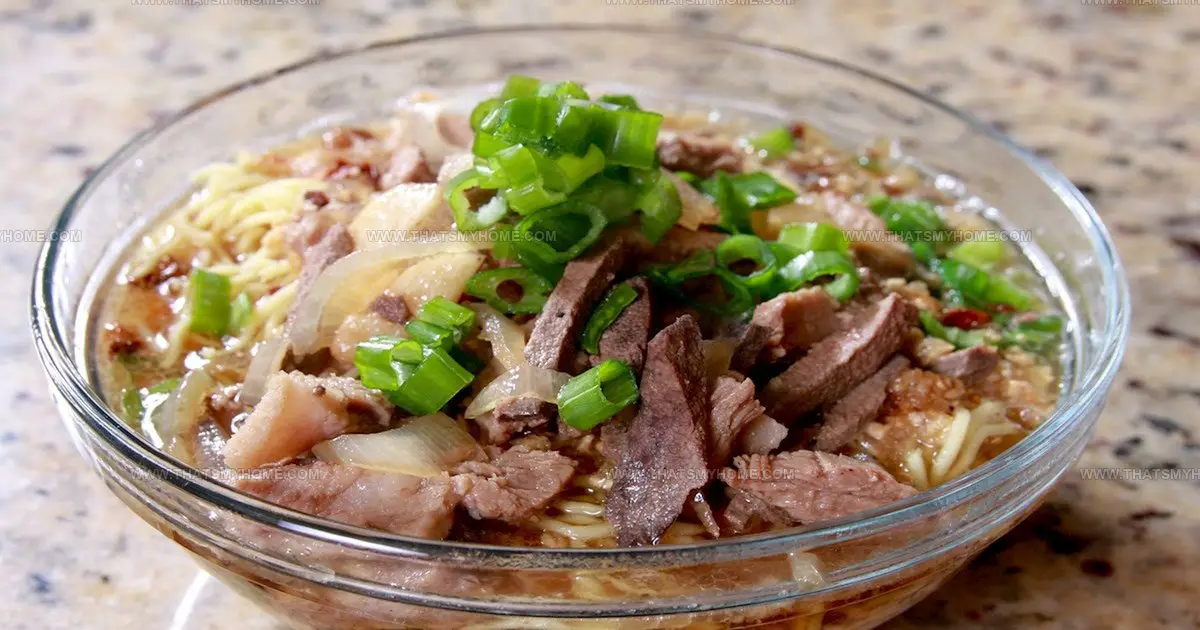
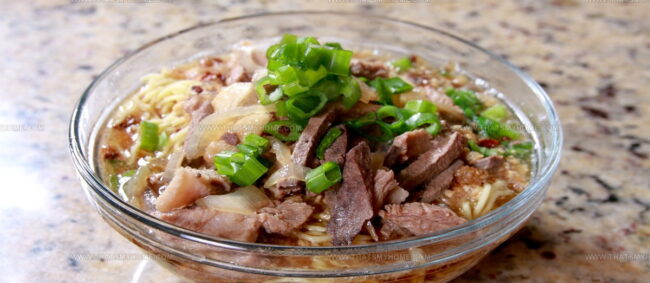

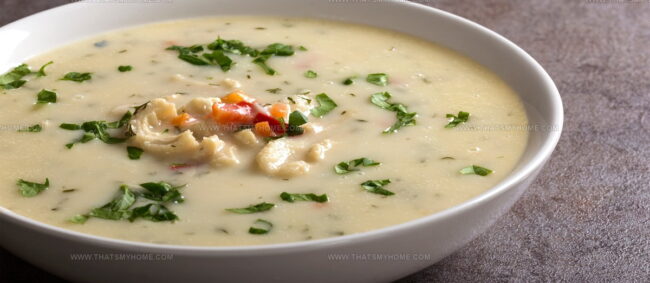
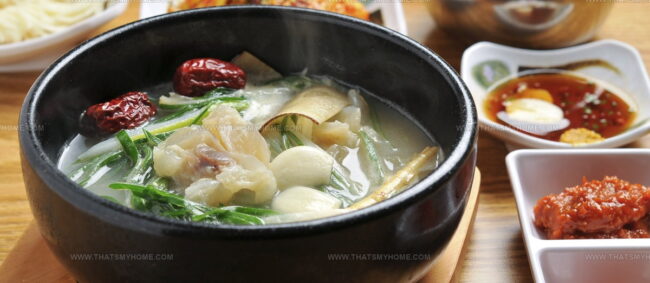
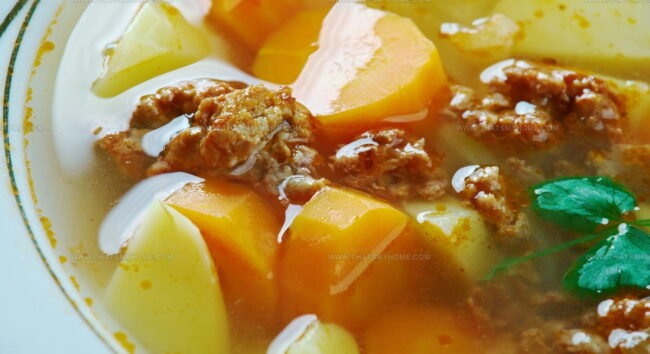
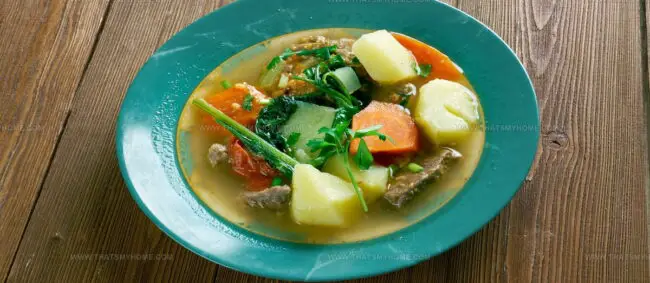
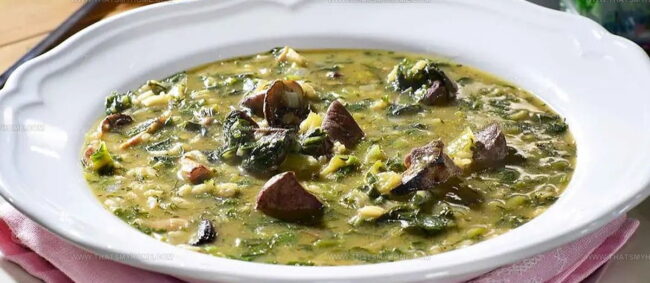
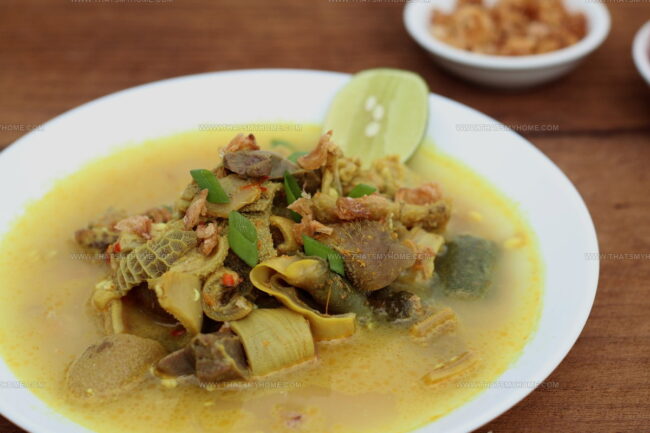
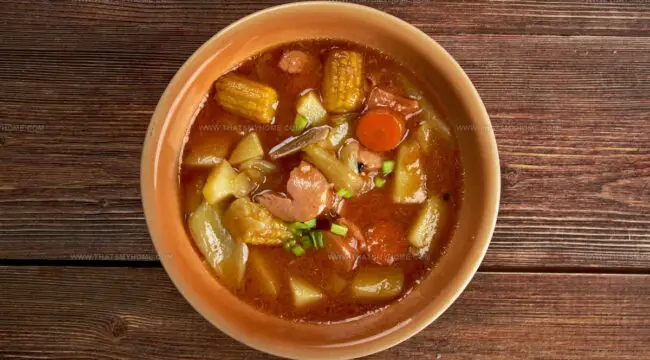
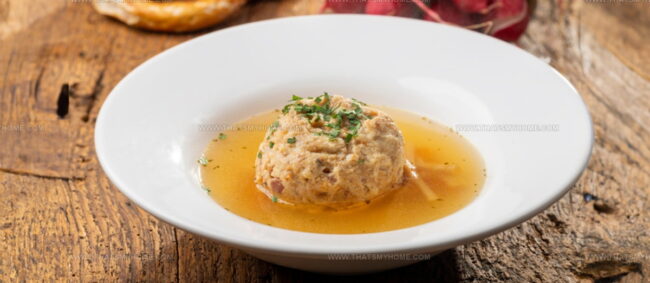
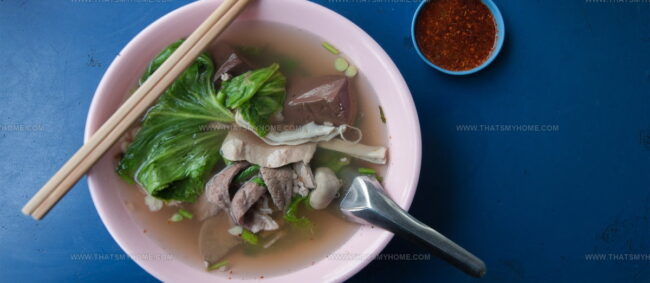
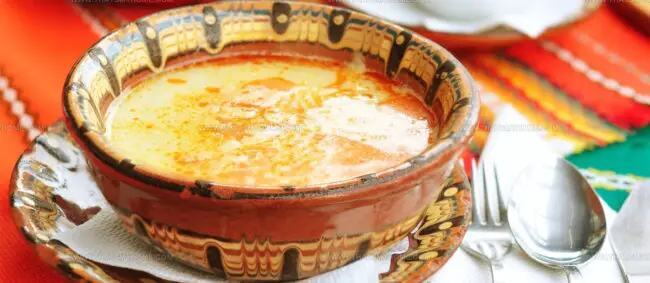
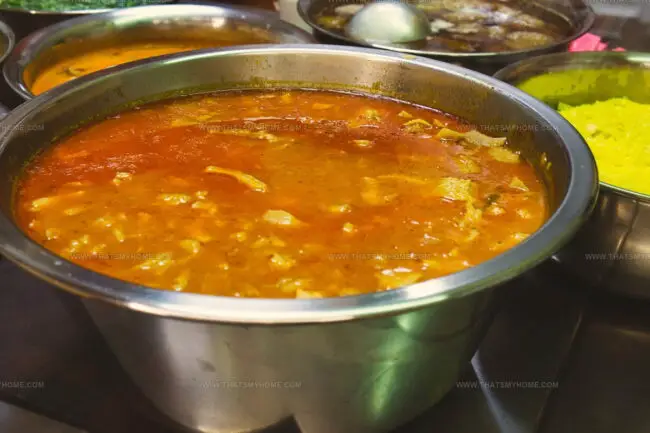
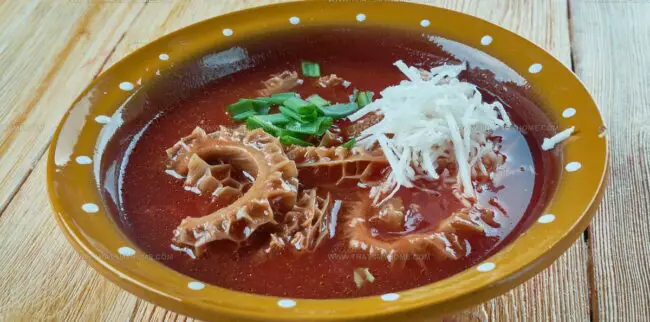
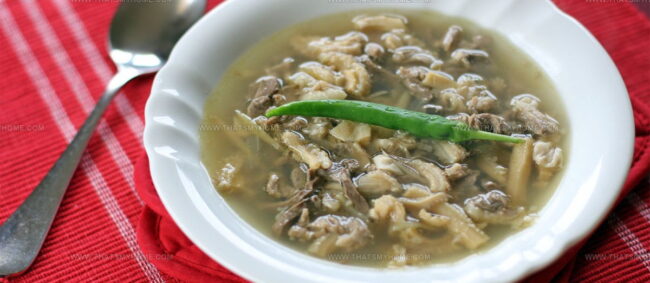
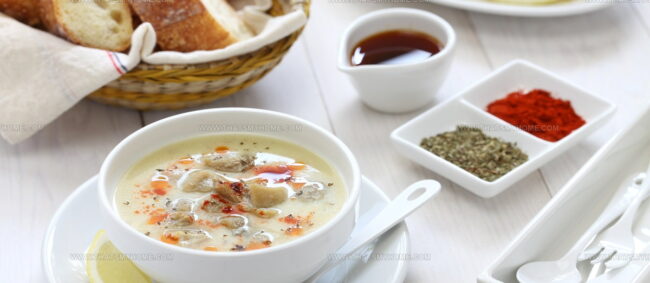
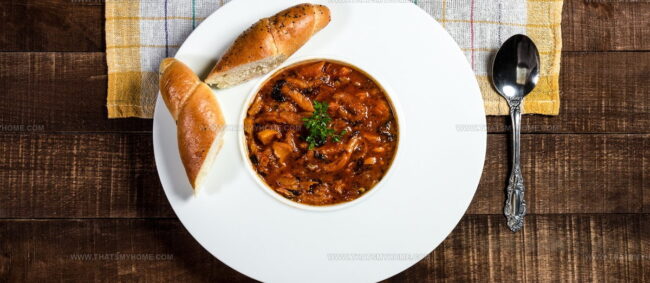
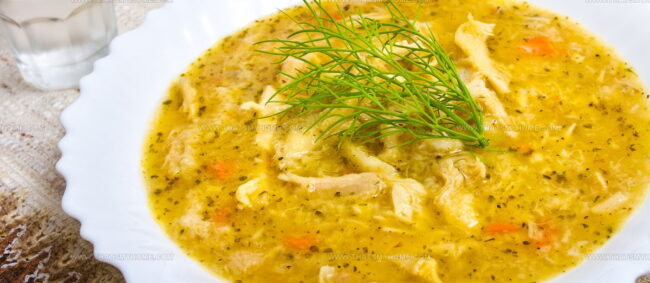
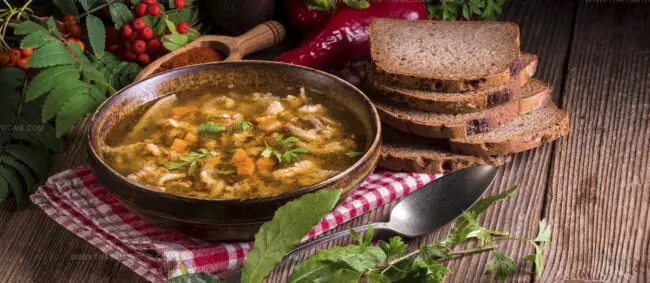
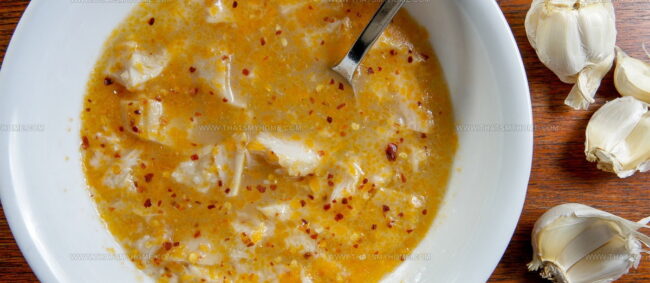
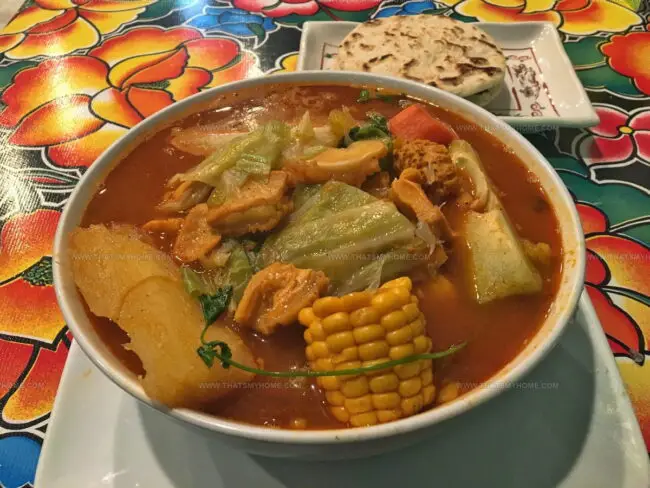
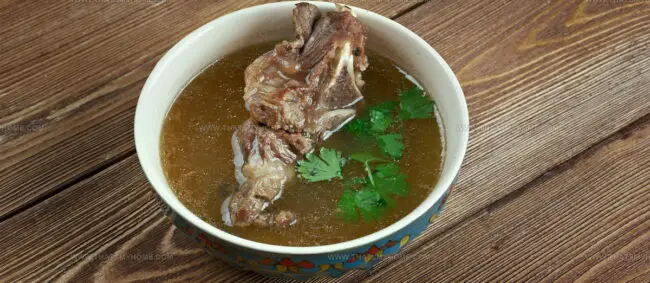
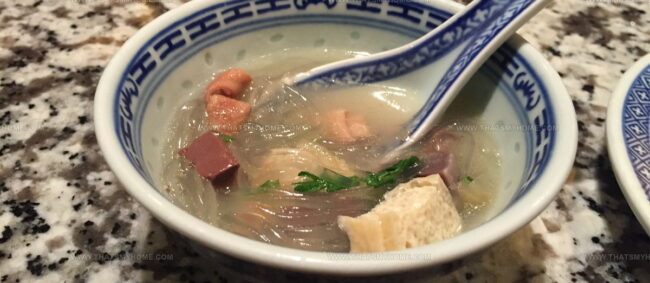
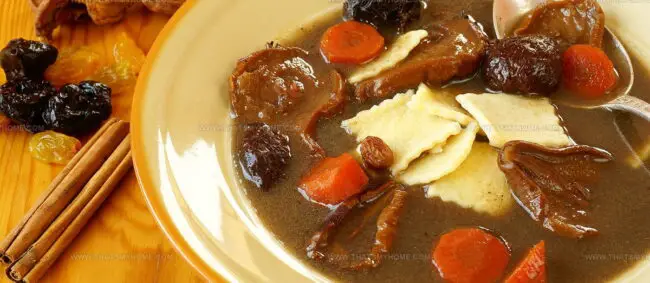
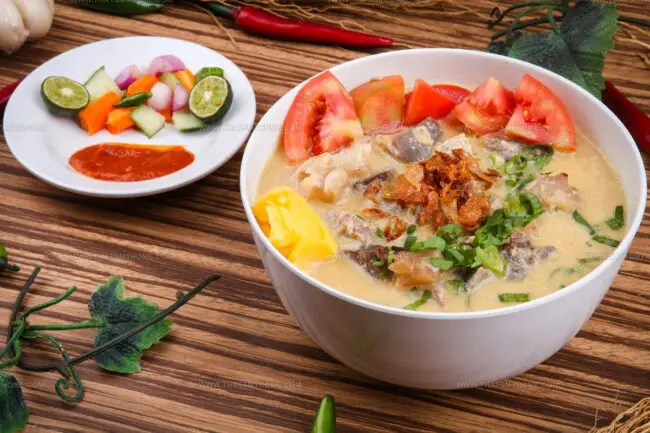
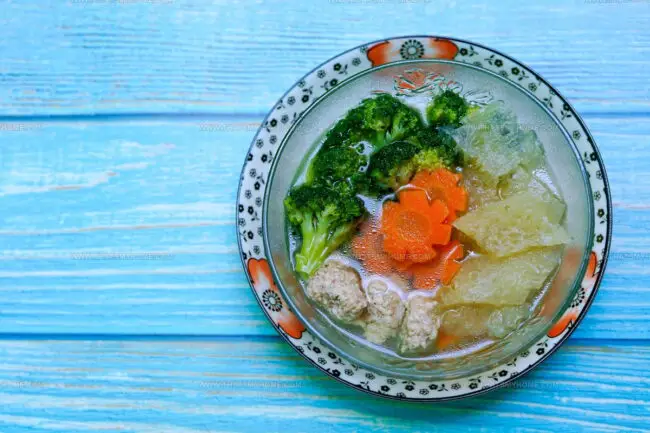
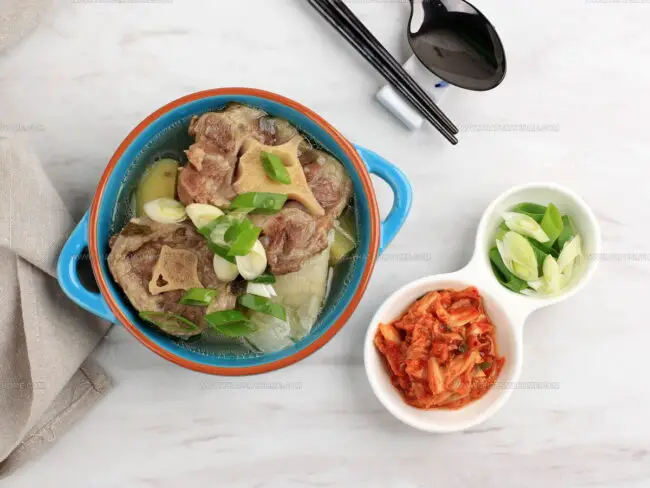
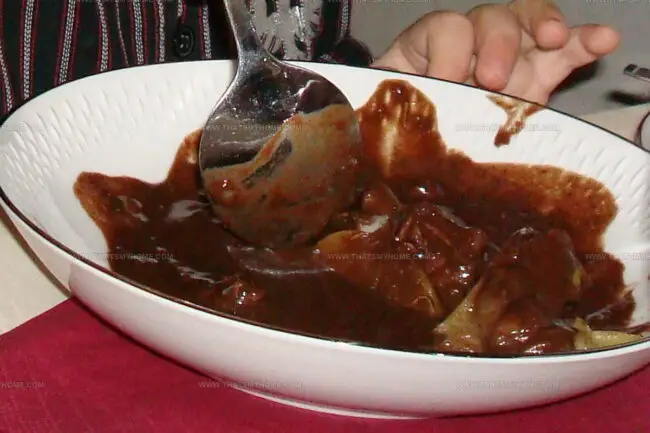
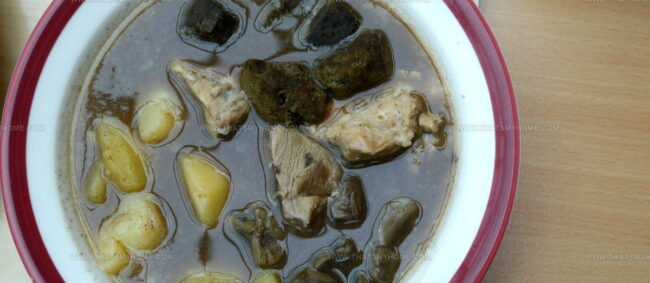
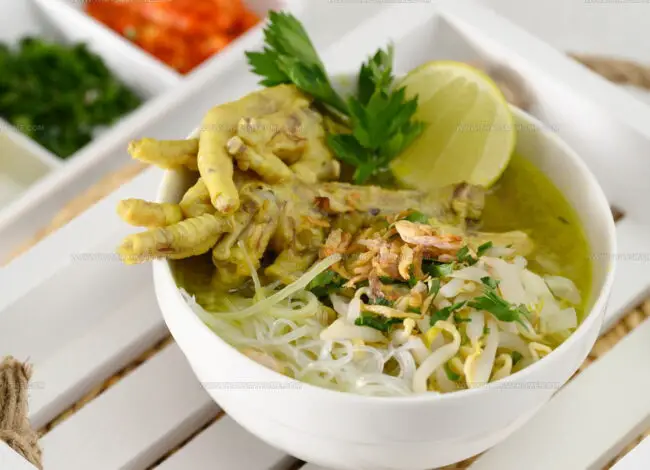
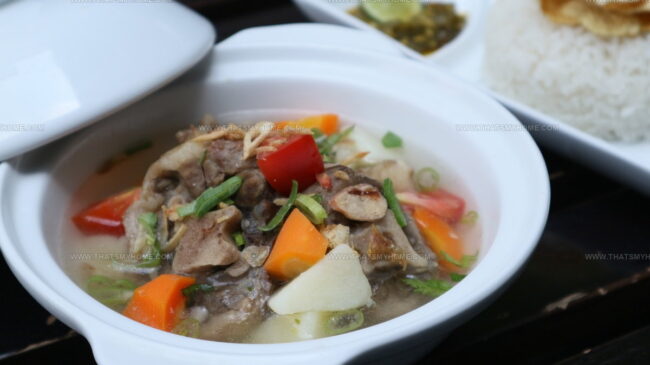
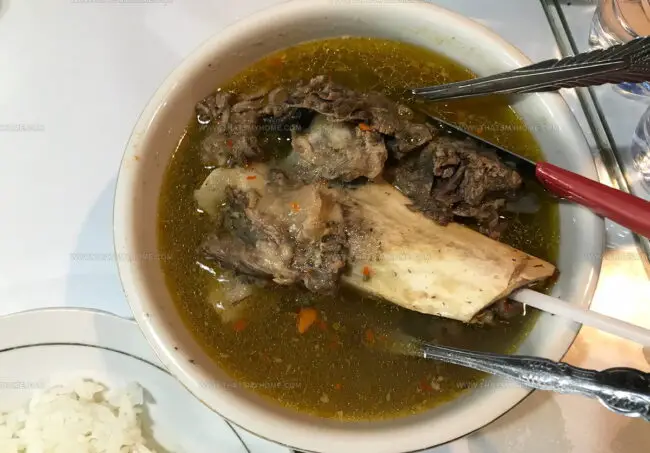
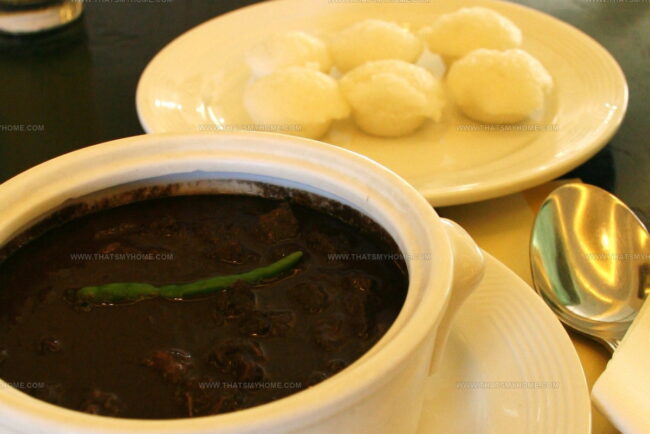
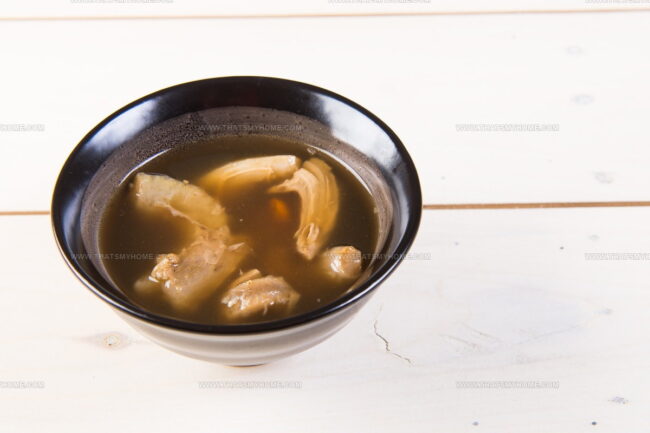
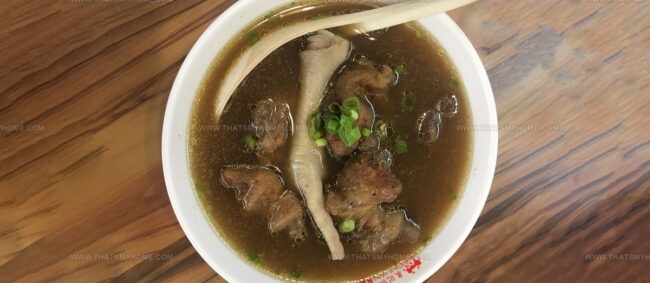
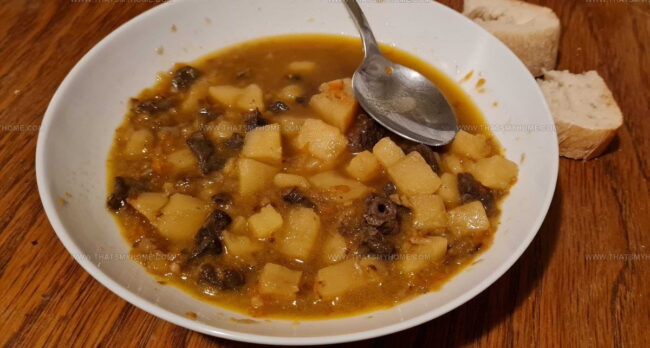
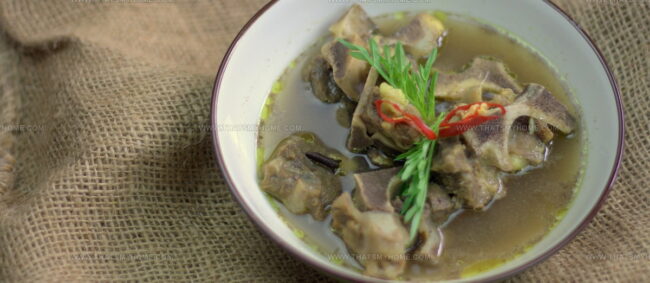
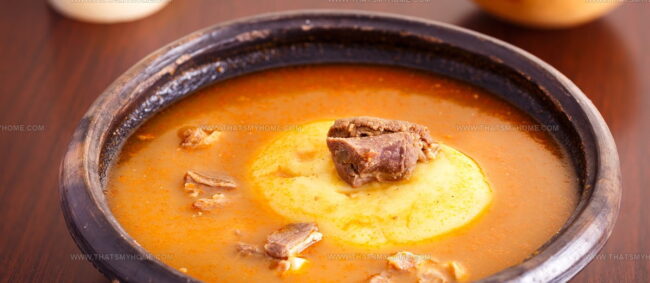
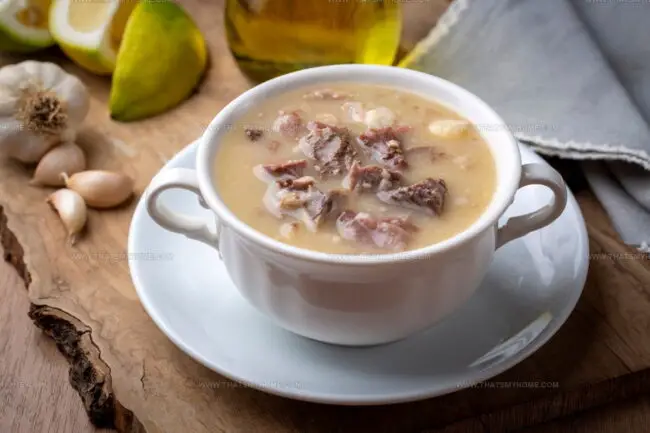
Mary Ellen
Founder, Pastry Chef & Recipe Developer
Expertise
Education
Savannah Technical College
Mary Ellen is the heart and soul of thatsmyhome.com. As the founder, pastry chef, and recipe developer, she refined her skills at Savannah Technical College with an Associate of Applied Science in Culinary Baking & Pastry Arts.
Mary blends classic techniques with modern twists to make artisanal breads, beautifully crafted pastries, and desserts full of unique flavor. Her passion is evident in every recipe, and she enjoys sharing her expertise through hands-on pastry workshops and insightful articles in local culinary magazines.